Do you need some help in finding a reliable Ankle Support in the coming days? If so, then make sure to check out our review for what we believe are 7 of the best Ankle Supports currently available in the UK at present that can be ordered online and delivered to your home hassle free. We have reviewed over 20 Ankle support brands and narrowed them down to our top 7 solutions which hopefully can speed up the process when it comes to your own online research.
Registered Ankle Support (CSP)
Included in our list will be MHRA registered ankle supports that are classed as a class 1 medical device by the Chartered Society of Physiotherapy which are made from neoprene, elastane and polyester. These type of ankle supports allow an adjustable strapping, can be used on both left and right feet and in turn provides you with your own customised fitting for optimum comfort and blood flow. In addition with the heated neoprene design, it can support ankles with arthritis, pains, aches or stiff ankle ligaments.
Video Insert: How to Wrap an Ankle Sprain
Read also: Review of the best Mini Steppers here
Ankle Injuries
Ankle injuries are a common occurrence, especially among athletes and people who lead an active lifestyle. Ankle injuries can be caused by a variety of factors, such as sudden twisting, overuse, or impact. These injuries can range from minor sprains to more severe fractures that require medical attention.
Most Common
One of the most common ankle injuries is an ankle sprain. An ankle sprain occurs when the ligaments that hold the ankle joint together are stretched or torn. This can happen when the ankle is twisted, turned, or rolled in an awkward manner. Symptoms of an ankle sprain include pain, swelling, bruising, and difficulty bearing weight on the affected ankle.
Fracture
Another common ankle injury is an ankle fracture. An ankle fracture occurs when one or more of the bones in the ankle joint are broken. This can happen as a result of a sudden impact, such as a fall or collision. Symptoms of an ankle fracture include pain, swelling, bruising, and an inability to bear weight on the affected ankle.
RICE Method
Treatment for ankle injuries depends on the severity of the injury. In the case of a minor ankle sprain, the RICE method (Rest, Ice, Compression, and Elevation) can be effective in reducing pain and swelling. Over-the-counter pain relievers, such as ibuprofen or acetaminophen, can also be helpful in managing pain. More severe ankle sprains or ankle fractures may require immobilization with a cast or brace, physical therapy, or even surgery.
Footwear
Prevention is key when it comes to ankle injuries. Wearing proper footwear that provides support and stability can help reduce the risk of ankle injuries. Stretching before exercise and using proper techniques during physical activity can also be helpful in preventing ankle injuries.
Best Ankle Supports – UK Recommendations
Option 1: McDavid Phantom 3+ Ankle Support
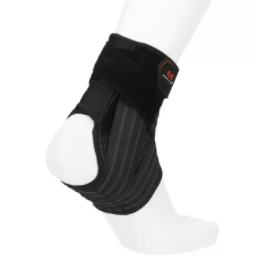
Ankle Support Key Features:
Provides a high level 3+ ankle support - Available sizes are medium and large
Made from nylon and plastic polyester
Lightweight design when compared to standard braces
Rear entry fitting and a thin fit to accommodate shoes
Back sealers adjustable - Vertical tension flex support
Contoured support with stir-up straps for stability
Price Guide: Less than £30
Option 2: NEO G Left or Right Ankle Support

Ankle Support Key Features:
One size fits all ankle support fitting - Can be used on either left or right ankle
Adjustable fit to ensure optimum blood flow
Therapeutic heat neoprene to maintain warmth
Supports ligament issues, aches and stiff ankles
MHRA registered as a class 1 medical device - Made from neoprene, polyester and elastane
Reduced eversions and inversions of the ankle
Price Guide: Less than £25
Video Insert: How to apply the Neo G Ankle Support
Ankle Support Relief
Some of the relief that these ankle supports can provide is relief from Achilles Tendonitis and Plantar Fasciitis which is extremely important when you need to keep up and maintain your stride as you need to. They can provide relief and help recovery on minor strains and in turn helps to protect the ankle joints during sporting and exercise routines. Others use these ankle supports after minor surgery while keeping the joint in a neutral stable position and helping with swelling, muscle fatigue or sprains.
Option 3: Beskey Single Adjustable Ankle Support Brace
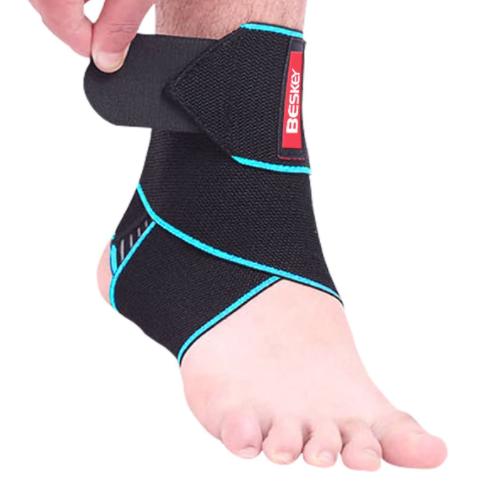
Ankle Support Key Features:
Ordered as a single unit, order 2 units if you need a pair
Adjustable support with a hook and strap system
Ideal thickness for use in footwear - One size here will fit all with adjustability strap
Made from elastic nylon, polyester with inside silicone
Can be used by both left and right feet - Excellent strong fastener for security
Open heel design, breathable and anti-odour
Protects and supports ankle joints, aches or pains
Price Guide: Less than £10
Option 4: Waspo Adjustable Ankle Support Brace
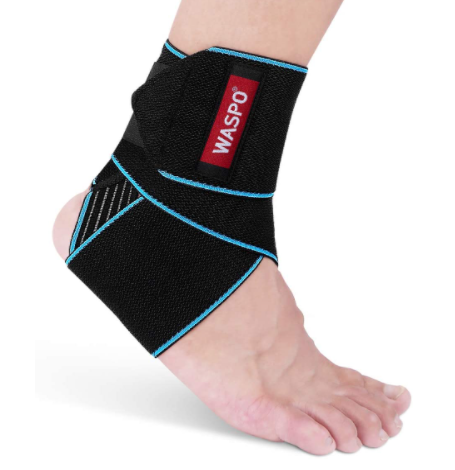
Ankle Support Key Features:
Can be ordered singular or as a pair - Helps to support ankle pains and injuries
Supports Achilles tendonitis and plantar fasciitis
One size fits all – plus can be used left or right foot
Provides stability support for ligament damage
Keeps your ankle joint in a neutral stable position
Breathable design with an open heel - Absorbs sweating, made from nylon and polyester
Fastened with a Velcro strap across the front
Price Guide: Tends to be less than £10
How to Attach your Ankle Strap
These steps can be used as a general guide when applying an ankle support strap to your own ankle. First you need to place your foot into the brace and then grab the strap laterally and keep the silicone side facing the ankle joint. Next you need to wrap it from the rear of your ankle and then under your foot.
Circle back to the rear of your ankle and adjust the strap until it feels firm against your skin. Lastly then just fasten the Velcro strap together when you have the right comfort tightness level when it comes to ankle supports made from nylon, polyester and elastic fibre.
Read also: Review of the best Slimming Weight loss solutions here
How to Protect Ankles from Injuries
Protecting your ankles from injuries is important, especially if you lead an active lifestyle or participate in sports. Ankle injuries can be painful and can take time to heal, and in some cases, may require medical attention and here are some tips on how to protect your ankles from injuries
Wear proper footwear
Wearing shoes that fit properly and provide good support can help protect your ankles from injuries. Make sure your shoes are appropriate for the activity you're doing and replace them when they become worn out.
Warm up before exercise
Doing a warm-up before exercise can help prepare your body for the activity and reduce the risk of injury. This can include gentle stretches and low-impact activities such as walking or jogging.
Use proper technique
Using proper technique during physical activity can help reduce the risk of ankle injuries. This can include landing softly when jumping, keeping your knees over your toes when squatting, and avoiding sudden changes in direction.
Strengthen your ankles
Strengthening the muscles around your ankles can help provide stability and reduce the risk of injury. This can include exercises such as calf raises, ankle circles, and resistance band exercises.
Avoid uneven surfaces
Avoiding uneven surfaces, such as rocky trails or uneven pavement, can help reduce the risk of ankle injuries. If you must walk on an uneven surface, take your time and be mindful of your footing.
Cool down after exercise
Cooling down after exercise can help your body recover and reduce the risk of injury. This can include gentle stretches and low-impact activities such as walking or cycling.
Option 5: Bodyprox Breathable Ankle Support Brace
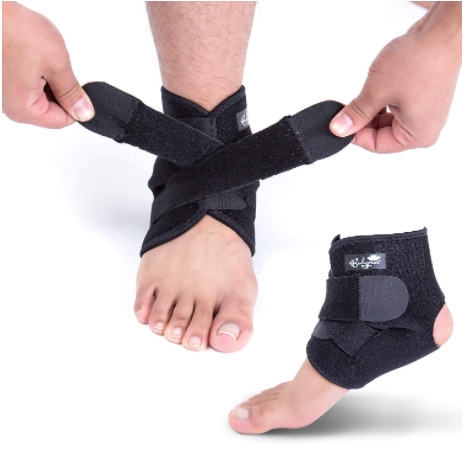
Ankle Support Key Features:
Adjustable breathable Neoprene support
One size fits all – can fit both left or right feet - Closure system works with hook and loop
Open heel design for breathable aeration
Supports ankle tendons, ligaments and joints - Provides help with stability support
No skin irritations, washable & retains heat - Durable and strong Velcro strapping
Only hand wash and air dry (no machine washing)
Support for multiple sorting types and exercises
Price Guide: Tends to be less than £15
Option 6: Cambivo Ankle Support Compression Sock
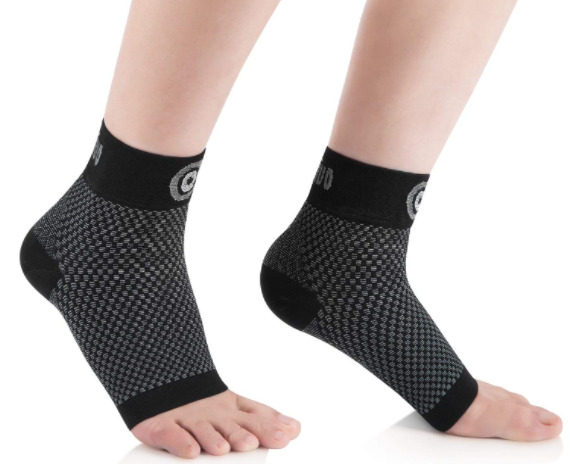
Ankle Support Key Features:
Alternative design as a compression sock - Slides up like a sleeve or a regular sock
No strapping or application difficulties - Available in various colour options
Such as grey, blue, pink or light green - Open toe design to help with air circulation
Comfortable fitting under regular socks or shoes
Breathable material to keep your feet dry
Made from 25% spandex and 75% nylon
Refer to size chart and covered with 2 year warranty
Price Guide: Less than £20
Option 7: AVIDDA 2 Pack Compression Ankle Support

Ankle Support Key Features:
Made from breathable fabric to allow aeration - Open toe and heel design with Velcro strap
Highly durable for maintaining muscle support - Graduated compression towards ankle joint
Fully protected under your shoe or trainers
Interchangeable with left and right feet - One size fits all and absorbs sweat
Wash by hand only and allow to air dry
Recommended by several medical professionals - Helps recovery after injury or minor surgery
Also Achilles tendonitis and plantar fasciitis - Anti-slip silicone strapping design
Sold as either a single unit or a pair of 2
Price Guide: Less than £20
Video Insert: Different types of Ankle Support to choose from
Read also: Our list of the best Weight Loss Shakes here
Benefits of Ankle Supports
If you have turned over on your ankle and you feel a lot of pain, then a reliable and robust Ankle support will help to support your ankle ligaments and offer protection against further strains and in turn offers more stability to your ankle region. You will need to make sure your shoes can accommodate the extra bulk associated to the ankle support.
These ankle supports offer a solution to relieve the pressure when walking or jogging, to reduce swelling and offer stability while the ankle injury heals itself over time. While they won’t cure the pain, they offer stability support while you are in the recovery mode of the duration of your ankle injury.
Types of Ankle Injuries
There are several types of ankle injuries that can occur, ranging from mild to severe and some common types of ankle injuries are outlined briefly below
Ankle sprain
An ankle sprain occurs when the ligaments that hold the ankle joint together are stretched or torn. This can happen when the ankle is twisted, turned, or rolled in an awkward manner. Symptoms of an ankle sprain include pain, swelling, bruising, and difficulty bearing weight on the affected ankle.
Ankle strain
An ankle strain occurs when the muscles or tendons around the ankle joint are stretched or torn. This can happen as a result of overuse or sudden twisting. Symptoms of an ankle strain include pain, swelling, and difficulty moving the affected ankle.
Ankle fracture
An ankle fracture occurs when one or more of the bones in the ankle joint are broken. This can happen as a result of a sudden impact, such as a fall or collision. Symptoms of an ankle fracture include pain, swelling, bruising, and an inability to bear weight on the affected ankle.
Achilles tendonitis
Achilles tendonitis is an inflammation of the Achilles tendon, which connects the calf muscles to the heel bone. This can happen as a result of overuse or repetitive stress on the tendon. Symptoms of Achilles tendonitis include pain, swelling, and stiffness in the ankle.
Syndesmotic injury
A syndesmotic injury occurs when the ligaments that connect the tibia and fibula bones in the lower leg are stretched or torn. This can happen as a result of a twisting or spraining motion. Symptoms of a syndesmotic injury include pain, swelling, and difficulty bearing weight on the affected ankle.
Peroneal tendonitis
Peroneal tendonitis is an inflammation of the peroneal tendons, which run along the outside of the ankle. This can happen as a result of overuse or repetitive stress on the tendons. Symptoms of peroneal tendonitis include pain, swelling, and stiffness in the ankle.
Conclusion
After completing our review for the best Ankle supports in the UK, we hope our work here can give you some ideas to think about and perhaps help you out in some small way in your own online search. We have included Ankle supports recommended by medical professionals, compression sock supports as well as Ankle supports that can be used by both feet and where one size fits all so there should be something here that can meet your own set of requirements.
Which one would we choose? For comfort and stability alone, it would have to be the Beskey Single Adjustable Ankle Support Brace outlined earlier and further information along with more customer reviews can be double checked above
Ankle Support Community Feedback
Have you ever used any of these Ankle supports yourself in the recent past?
If possible, please feel free to educate others in the wider community by leaving your feedback or opinions in the comment box section provided below…

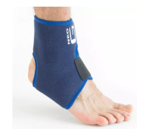

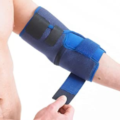
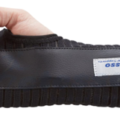
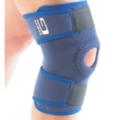


Feedback Examples